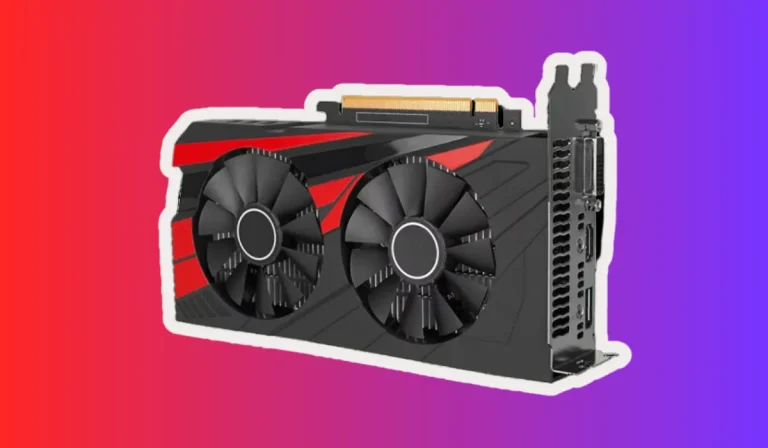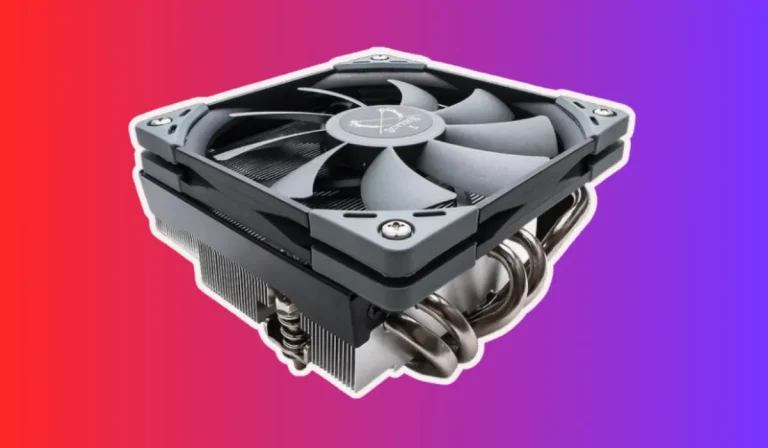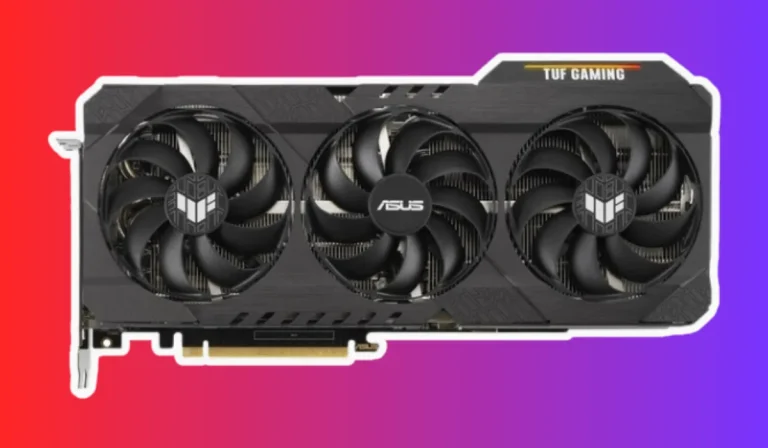Best Graphics Card for Animation
Are you an aspiring animator looking to bring your imagination to life? Look no further! We’ve got the inside scoop on the best graphics card for animation that will take your storytelling to new heights.
With its exceptional performance and cutting-edge technology, this graphics card will make your characters come alive with vibrant colors and smooth movements. Get ready to dive into a world of creativity and let your animations shine like never before!
Best Graphics Card for Animation
| Serial No. | Product Name | Check Price Text |
| 1. | NVIDIA GeForce RTX 3090 | Check Price |
| 2. | AMD Radeon RX 6800 XT | Check Price |
| 3. | NVIDIA GeForce RTX 3080 | Check Price |
| 4. | AMD Radeon RX 6900 XT | Check Price |
| 5. | NVIDIA GeForce RTX 3070 | Check Price |
| 6. | AMD Radeon RX 6700 XT | Check Price |
1. NVIDIA GeForce RTX 3090
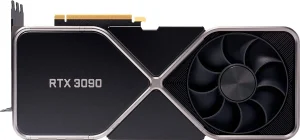
| Specification | |
| Chipset | NVIDIA GeForce RTX 3090 |
| Video Memory | 24GB GDDR6X |
| Memory Interface | 384-bit |
| Output | DisplayPort x 3 (v1.4a)<br>HDMI 2.1 x 1 |
| Warranty | Nvidia India 3 Year |
NVIDIA GeForce RTX 3090 boasts a remarkable chipset, making it one of the best graphics cards for animation available in the market. As an animation enthusiast, I understand the importance of a powerful graphics card in bringing your creations to life.
The NVIDIA GeForce RTX 3090 is a beast of a graphics card that is specifically designed to meet the needs of animators and visual artists. Let me share my personal experience and review of this incredible piece of hardware.
With its powerful NVIDIA GeForce technology, it delivers exceptional performance, allowing you to render complex scenes, fluid character animations, and stunning visual effects with ease.
One standout feature of the RTX 3090 is its massive 24GB GDDR6X video memory. This abundant memory capacity enables you to work on high-resolution projects without worrying about running out of memory. Whether you’re working on a detailed 3D model or creating intricate particle simulations, this graphics card has got your back.
The 384-bit memory interface ensures fast data transfer, resulting in smooth and lag-free animation playback. This means you can preview your work in real time, making it easier to make adjustments and achieve the desired visual impact.
In terms of connectivity, the RTX 3090 offers three DisplayPort and one HDMI output. This allows you to connect multiple monitors or high-resolution displays, providing you with a spacious workspace to unleash your creativity and multitask efficiently.
Now, let’s talk about the positive and negative aspects of the NVIDIA GeForce RTX 3090:
Pros:
- Unparalleled performance for animation rendering and real-time playback.
- Ample 24GB video memory for handling high-resolution projects.
- Fast data transfer with the 384-bit memory interface.
- Multiple display outputs for enhanced productivity and workspace flexibility.
Cons:
- High price points, may be a barrier for budget-conscious users.
- Requires a compatible power supply unit due to its power-hungry nature.
2. AMD Radeon RX 6800 XT
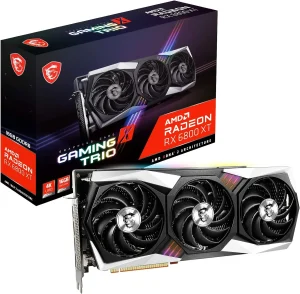
| Specification | |
| Chipset | Radeon RX 6800 XT |
| Video Memory | 16GB GDDR6 |
| Memory Interface | 256-bit |
| Output | DisplayPort x 3 (v1.4)<br>HDMI 2.1 x 1 |
| Digital Maximum Resolution | 7680 x 4320 |
Radeon RX 6800 XT is equipped with a cutting-edge chipset, making it one of the best graphics cards for animation available in the market.
As an animation enthusiast, I know how crucial it is to have a high-performance graphics card that can handle the demands of complex animations.
The AMD Radeon RX 6800 XT is a powerhouse graphics card that aims to deliver exceptional performance and stunning visuals for animators and visual artists. Let me share my personal experience and review of this remarkable piece of hardware.
Powered by AMD’s advanced technology, it offers impressive performance that allows you to tackle even the most demanding animation projects with ease.
One standout feature of the RX 6800 XT is its 16GB GDDR6 video memory. This generous memory capacity ensures smooth rendering of complex scenes and seamless playback of your animations.
Whether you’re working on intricate character animations or creating breathtaking visual effects, this graphics card can handle it all.
With a 256-bit memory interface, the RX 6800 XT provides fast and efficient data transfer, allowing you to work seamlessly without any lag or delay.
This ensures a smooth workflow, enabling you to focus on your creativity rather than worrying about technical limitations.
In terms of connectivity, the RX 6800 XT offers three DisplayPort and one HDMI output. This allows you to connect multiple high-resolution displays, providing you with a wide and immersive workspace to bring your animations to life.
Now, let’s take a look at the positive and negative aspects of the AMD Radeon RX 6800 XT:
Pros:
- Impressive performance for rendering complex animations.
- Generous 16GB video memory for handling high-resolution projects.
- Efficient data transfer with the 256-bit memory interface.
- Multiple display outputs for enhanced productivity and workspace flexibility.
Cons:
- Availability and pricing may vary, making it challenging to acquire.
- Power consumption can be relatively high, requiring a compatible power supply.
3. NVIDIA GeForce RTX 3080
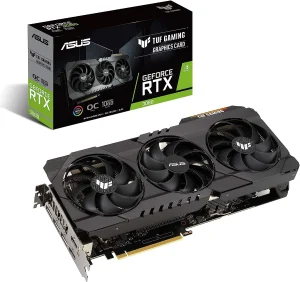
| Specification | |
| NVIDIA Ampere Streaming Multiprocessors | Improved power efficiency and 2X FP32 throughput |
| 2nd Generation RT Cores | 2X throughput compared to 1st Gen RT Cores, concurrent RT, and shading |
| 3rd Generation Tensor Cores | Up to 2X throughput, DLSS support, 8K resolution, and AI capabilities |
| Axial-Tech Fan Design | Reversed central fan direction for reduced turbulence |
| Military-grade Capacitors | Enhanced durability and performance |
| Dual Ball Fan Bearings | Longer lifespan compared to sleeve-bearing designs |
| GPU Tweak II | Intuitive performance tweaking, thermal controls, and system monitoring |
NVIDIA GeForce RTX 3080 stands as a true powerhouse for animators seeking the best graphics card for their animation projects.
If you’re a passionate animator in search of the best graphics card to take your animation projects to new heights, look no further than the NVIDIA GeForce RTX 3080. As an animator myself, I have had the pleasure of experiencing the power and capabilities of this graphics card firsthand.
Allow me to share my detailed review and personal insights about the NVIDIA GeForce RTX 3080 and how it can transform your animation workflow.
The NVIDIA GeForce RTX 3080 is built on the groundbreaking Ampere architecture, featuring Ampere Streaming Multiprocessors (SM) that deliver unparalleled performance and power efficiency.
With 2X the FP32 throughput compared to its predecessors, this graphics card ensures smooth and efficient rendering of even the most complex animation scenes.
One of the standout features of the RTX 3080 is its 2nd Generation RT Cores. These cores provide 2X the throughput of the 1st Gen RT Cores and enable concurrent ray tracing and shading, resulting in a whole new level of ray tracing performance. The RTX 3080 brings your animations to life with stunning realism and breathtaking visual effects.
The 3rd Generation Tensor Cores in the RTX 3080 offers up to 2X the throughput, thanks to structural sparsity and advanced AI algorithms such as DLSS (Deep Learning Super Sampling).
These cores not only boost game performance but also provide all-new AI capabilities, enhancing the realism and quality of your animation projects. With support for up to 8K resolution, the RTX 3080 delivers an immersive visual experience like no other.
In terms of design, the RTX 3080 features an Axial-Tech Fan Design that has been meticulously tuned to reduce turbulence and improve cooling efficiency.
This ensures that the graphics card stays cool even during intense rendering sessions, allowing for consistent performance. Additionally, the use of military-grade capacitors and other TUF components enhances the durability and overall performance of the card, making it a reliable choice for demanding animation tasks.
The Dual Ball Fan Bearings in the RTX 3080 are designed to last up to twice as long as sleeve bearing designs. This not only contributes to the long-term reliability of the card but also ensures quieter operation, allowing you to focus on your creative process without distraction.
To further enhance your animation experience, the RTX 3080 comes with GPU Tweak II software. This intuitive tool provides performance tweaking options, thermal controls, and system monitoring, allowing you to optimize the graphics card’s settings according to your specific animation requirements.
Pros:
- Unparalleled performance and power efficiency.
- Advanced ray tracing capabilities.
- DLSS support for improved AI-driven rendering.
- Effective cooling with reduced turbulence.
- Enhanced durability and reliability.
- Intuitive performance tweaking and monitoring options.
Cons:
- High demand and limited availability.
- Higher price compared to some other graphics cards.
4. AMD Radeon RX 6900 XT
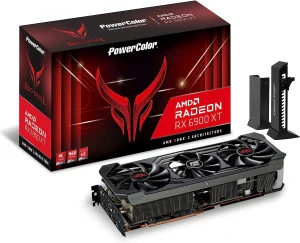
| Specification | |
| Memory Speed | 16.0 Gbps |
| Digital Max Resolution | 7680×4320 |
| Country Of Origin | China |
| Package Weight | 5.5 lbs |
| Stream Processor | 5121 |
| Game Clock | 2105 MHz (OC) / 2015 MHz (Silent) |
AMD Radeon RX 6900 XT is a powerful graphics card that stands out as one of the best options for animators. Are you an animator searching for the best graphics card that can take your creations to new heights? Look no further than the AMD Radeon RX 6900 XT.
As someone who has delved into the world of animation, I can confidently say that this graphics card is a game-changer. Allow me to share my personal experience and review of this incredible piece of hardware.
The RX 6900 XT boasts impressive specifications that make it a top contender for the title of the best graphics card for animation.
With a memory speed of 16.0 Gbps and a digital max resolution of 7680×4320, this graphics card effortlessly handles even the most demanding projects. From intricate character animations to visually stunning effects, the RX 6900 XT delivers exceptional performance.
One notable feature of this graphics card is its origin. Manufactured in China, the RX 6900 XT combines the expertise of AMD with the precision and quality of Chinese manufacturing. This collaboration results in a graphics card that not only performs flawlessly but is also built to last.
Weighing in at 5.5 lbs, the RX 6900 XT is a solid piece of hardware. Its robust construction ensures durability, giving you peace of mind knowing that your investment is protected. This graphics card is designed to withstand the demands of long rendering sessions and intense animation workflows.
With 5121 stream processors, the RX 6900 XT delivers exceptional performance when it comes to rendering animations. Its game clock of 2105 MHz (OC) or 2015 MHz (Silent) ensures smooth playback and real-time previews, allowing you to fine-tune your work with ease.
Now, let’s dive into the positive and negative aspects of the AMD Radeon RX 6900 XT:
Pros:
- Impressive performance and handling of demanding animation projects.
- High memory speed and digital max resolution for exceptional visual quality.
- Collaboration between AMD and Chinese manufacturing for a reliable and durable graphics card.
- Robust construction to withstand long rendering sessions.
- Abundance of stream processors for efficient rendering and playback.
Cons:
- Availability may be limited due to high demand.
- Power consumption may be higher compared to other graphics cards.
5. NVIDIA GeForce RTX 3070
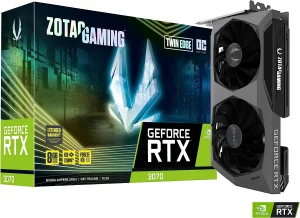
| Specification | |
| NVIDIA Ampere architecture | Next-generation architecture for improved performance |
| 2nd Gen Ray Tracing Cores | Enhanced ray tracing capabilities for realistic visuals |
| 3rd Gen Tensor Cores | Advanced AI capabilities for improved rendering |
| Boost Clock | 1755 MHz |
| Memory | 8GB 256-bit GDDR6, 14 Gbps |
| PCIE | 4.0 |
| Low Hash Rate (LHR) | 25 MH’s ETH hash rate (est.) |
| White LED Logo Lighting | Stylish illumination for aesthetics |
| IceStorm 2.0 Advanced Cooling | Efficient cooling for optimal performance |
| FREEZE Fan Stop | The fan stops spinning during low load for silent operation |
| Active Fan Control | Customizable fan settings |
| Metal Backplate | Enhanced durability and heat dissipation |
| 8K Ready | Supports resolutions up to 8K |
| 4 Display Ready | Multiple display support |
| HDCP 2.3 | High-bandwidth Digital Content Protection |
| VR Ready | Compatible with virtual reality applications |
| 4 x DisplayPort 1.4a | Display connectivity options |
| 1 x HDMI 2.1 | High-definition multimedia interface |
| DirectX 12 Ultimate | Next-generation graphics API |
| Vulkan RT API | Cross-platform graphics API |
| OpenGL 4.6 | Graphics rendering API |
NVIDIA GeForce RTX 3070 is a game-changer for animators in pursuit of the best graphics card for their animation projects. As an animator who constantly seeks the best tools to bring my imagination to life, the NVIDIA GeForce RTX 3070 has exceeded my expectations in every aspect.
Let me share with you my detailed review and personal experience with this remarkable graphics card, specifically tailored for animation workflows and the pursuit of stunning visuals.
The RTX 3070 is built on the NVIDIA Ampere architecture, the very foundation that powers the next generation of graphics cards. This architecture delivers a significant boost in performance, allowing for smoother and more efficient rendering of complex animation scenes.
The 2nd Gen Ray Tracing Cores take animation realism to new heights, creating lifelike lighting and reflections that add depth and immersion to your projects.
One of the standout features of the RTX 3070 is its 3rd Gen Tensor Cores. These advanced cores introduce powerful AI capabilities to the graphics card, enhancing rendering and improving overall efficiency.
The RTX 3070 harnesses the power of AI algorithms to optimize your animation workflow, resulting in faster rendering times and improved visual quality.
With a boost clock of 1755 MHz and 8GB of high-speed GDDR6 memory, the RTX 3070 ensures smooth performance even when handling large animation files.
The PCIe 4.0 support further maximizes data transfer rates, minimizing bottlenecks and allowing for seamless animation playback and rendering.
In terms of cooling, the RTX 3070 features IceStorm 2.0 Advanced Cooling technology. This innovative cooling solution keeps the graphics card operating at optimal temperatures, ensuring consistent performance during demanding animation tasks.
The FREEZE Fan Stop feature allows the fans to stop spinning during low-load situations, enabling silent operation and reducing unnecessary noise distractions.
The active fan control feature of the RTX 3070 allows you to customize the fan settings according to your preferences and the specific requirements of your animation projects.
This level of control ensures that you can strike the perfect balance between cooling and noise generation, creating a seamless and distraction-free creative environment.
The inclusion of a metal backplate not only adds to the aesthetics of the graphics card but also enhances its durability and heat dissipation capabilities.
This design choice ensures that the RTX 3070 remains cool and reliable even during extended animation sessions.
The RTX 3070 is 8K ready, supporting resolutions up to 8K, which is a remarkable feature for animators looking to create high-resolution content.
Whether you’re working on detailed character animations or intricate background designs, the RTX 3070 provides the necessary horsepower to bring your vision to life in stunning detail.
While the RTX 3070 offers an array of impressive features, it’s important to note a couple of considerations.
Pros:
- Next-generation architecture for improved performance.
- Enhanced ray tracing capabilities for realistic visuals.
- Advanced AI capabilities for improved rendering efficiency.
- Efficient cooling for optimal performance.
- Customizable fan settings for a personalized experience.
- Enhanced durability and heat dissipation.
- Supports high resolutions up to 8K.
Cons:
- Limited availability and high demand.
- Avoid using unofficial software to ensure stability and compatibility.
6. AMD Radeon RX 6700 XT
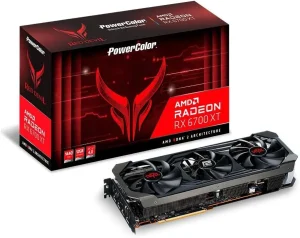
| Specification | |
| Memory Speed | 16 Gbps |
| Digital Max Resolution | 7680×4320 |
| Package Weight | 2.0 Kg |
| Stream Processor | 2560 |
| Game Clock | 2514MHz (OC) / 2433MHz (Silent) |
| Boost Clock | 2633MHz (OC) / 2615MHz (Silent) |
AMD Radeon RX 6700 XT is a formidable graphics card that caters to the needs of animators. Are you an animator in search of the best graphics card to elevate your animation projects to new heights? Look no further than the AMD Radeon RX 6700 XT.
As an animator myself, I have had the pleasure of experiencing the power and capabilities of this graphics card firsthand. Allow me to share my review and insights about this impressive piece of hardware.
The RX 6700 XT boasts a memory speed of 16 Gbps, ensuring smooth and efficient rendering of even the most complex animation scenes.
With a digital max resolution of 7680×4320, this graphics card allows you to work with stunning visuals and bring your imagination to life in remarkable detail.
When it comes to performance, the RX 6700 XT doesn’t disappoint. With 2560 stream processors, this graphics card offers exceptional processing power for your animation tasks.
Whether you’re working on character animations, fluid simulations, or intricate visual effects, the RX 6700 XT handles it all with ease.
One of the standout features of this card is its game clock and boost clock speeds. With a game clock of 2514MHz (OC) / 2433MHz (Silent) and a boost clock of 2633MHz (OC) / 2615MHz (Silent), the RX 6700 XT delivers smooth and responsive performance, ensuring that your animations are rendered quickly and accurately.
It’s worth noting that while the RX 6700 XT offers impressive performance for animation, it is essential to avoid using unofficial software. Stick to reliable and officially supported software to ensure the best compatibility and performance.
Now, let’s take a closer look at the positive and negative aspects of the AMD Radeon RX 6700 XT:
Pros:
- High memory speed for smooth rendering.
- Impressive digital max resolution for stunning visuals.
- Ample stream processors for powerful performance.
- Game clock and boost clock speeds for responsive animation rendering.
- Reliability and official software support.
Cons:
- Availability may be limited due to demand.
- Higher package weight compared to some other graphics cards.
Buying Guide: Best Graphics Card for Animation
As an expert in the field of animation, I understand the importance of selecting the right graphics card to bring your creative visions to life. With so many options available on the market, it can be overwhelming to make a decision.
Fear not! In this detailed buying guide, I will walk you through six essential factors to consider when choosing the best graphics card for animation. By the end of this guide, you’ll be equipped with the knowledge to make an informed decision. Let’s dive in!
1. Performance and Rendering Power: Animation tasks require significant processing power. When choosing a graphics card, look for one with ample performance and rendering capabilities.
Consider factors such as the number of stream processors, clock speeds, and memory speed. Opt for a graphics card that can handle the complexity of your animation projects without compromising on speed and quality.
2. Memory Capacity and Bandwidth: Animation projects often involve working with large files and complex scenes. A graphics card with sufficient memory capacity and bandwidth is crucial to handle the data-intensive nature of animation work. Look for a card with a generous amount of video memory (VRAM) to ensure smooth playback and rendering of your animations.
3. Software Compatibility: Animation software plays a vital role in the creation process. Before making a purchase, ensure that the graphics card you choose is compatible with the animation software you use.
Check the software’s official documentation or consult with fellow animators to determine which graphics cards are recommended for optimal performance and compatibility.
4. Display Connectivity Options: Consider the display connectivity options offered by the graphics card. Depending on your setup, you may require multiple monitors or specific display ports.
Ensure that the graphics card supports the necessary connections to accommodate your desired display configuration. This will allow you to have a seamless workflow and better control over your animation workspace.
5. Power Requirements and Cooling: Graphics cards, especially high-performance ones, often require a significant amount of power. Before purchasing, ensure that your power supply unit (PSU) can handle the power demands of the graphics card.
Additionally, consider the cooling capabilities of the card. Animation work can put a strain on the GPU, so look for cards with efficient cooling solutions to prevent overheating and maintain optimal performance.
6. Budget and Value for Money: Last but not least, consider your budget and the value for money offered by the graphics card. While it may be tempting to go for the most expensive option, it’s essential to find a balance between performance and cost.
Determine your animation needs and prioritize the features that are most important to you. Look for graphics cards that offer a good combination of performance, reliability, and affordability.
Based on the factors mentioned above, I highly recommend considering the AMD Radeon RX 6700 XT from the list provided.
With its impressive performance, high memory speed, and ample stream processors, it is an excellent choice for animators seeking a powerful graphics card.
Additionally, its compatibility with popular animation software and reliability make it a standout option for bringing your animation projects to life.
FAQ’s
1. What makes a graphics card the best choice for animation?
A graphics card suitable for animation should have a powerful GPU, ample VRAM, and support for advanced features like ray tracing and AI rendering. These factors contribute to faster rendering times and improved visual quality.
2. How much VRAM do I need in a graphics card for animation?
The amount of VRAM you need depends on the complexity of your animation projects. For most animators, 8GB to 16GB of VRAM is sufficient. However, if you work on highly detailed and intricate animations, consider opting for a card with 16GB or more for smoother performance.
3. Do I need a specific brand of graphics card for animation?
The brand of the graphics card is less important than the specifications it offers. However, reputable brands like NVIDIA and AMD often provide reliable and feature-rich options that are well-suited for animation tasks. It’s important to research and compare specifications rather than focusing solely on the brand.
4. Should I prioritize high clock speeds or more CUDA cores for animation?
Both clock speeds and CUDA cores play crucial roles in animation performance. Higher clock speeds result in faster processing, while more CUDA cores enable parallel processing, which is beneficial for complex animation rendering. It’s recommended to strike a balance between the two for optimal performance.
5. Can I use a gaming graphics card for animation?
While gaming graphics cards can handle animation to some extent, they may not provide the same level of performance and efficiency as professional-grade cards specifically designed for animation.
Professional cards often offer better driver support, enhanced software compatibility, and optimized performance for animation workflows. However, if your animation requirements are not too demanding, a high-end gaming graphics card can still be a viable option.
Conclusion
Choosing the best graphics card for animation can be a daunting task, considering the variety of options available in the market.
However, by understanding the key factors that contribute to optimal animation performance, such as a powerful GPU, ample VRAM, and support for advanced features, you can make an informed decision.
Remember to consider the complexity of your animation projects and strike a balance between clock speeds and CUDA cores.
While gaming graphics cards might suffice for less demanding tasks, professional-grade cards often provide better performance and compatibility for animation workflows. So, take your time, do your research, and select a graphics card that meets your specific animation needs. Happy animating!

